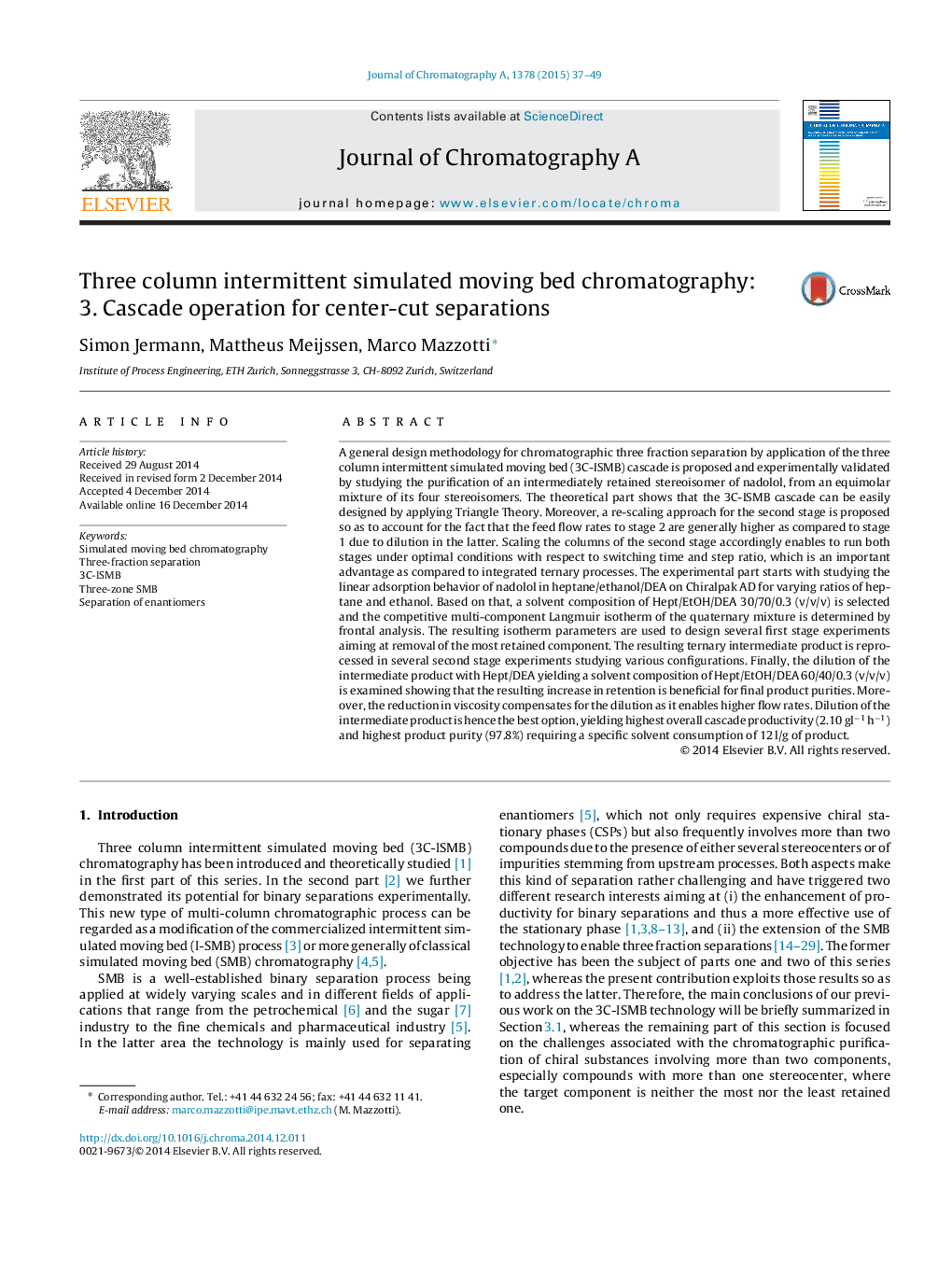| Article ID | Journal | Published Year | Pages | File Type |
|---|---|---|---|---|
| 1202348 | Journal of Chromatography A | 2015 | 13 Pages |
•A 3C-ISMB cascade for continuous three-fraction separations is presented.•A general design methodology for the process design is proposed.•The latter is experimentally validated studying the purification of nadolol.•An intermediately retained isomer is isolated from a mixture of four stereoisomers.•Product purities of up to 98.3% are achieved.
A general design methodology for chromatographic three fraction separation by application of the three column intermittent simulated moving bed (3C-ISMB) cascade is proposed and experimentally validated by studying the purification of an intermediately retained stereoisomer of nadolol, from an equimolar mixture of its four stereoisomers. The theoretical part shows that the 3C-ISMB cascade can be easily designed by applying Triangle Theory. Moreover, a re-scaling approach for the second stage is proposed so as to account for the fact that the feed flow rates to stage 2 are generally higher as compared to stage 1 due to dilution in the latter. Scaling the columns of the second stage accordingly enables to run both stages under optimal conditions with respect to switching time and step ratio, which is an important advantage as compared to integrated ternary processes. The experimental part starts with studying the linear adsorption behavior of nadolol in heptane/ethanol/DEA on Chiralpak AD for varying ratios of heptane and ethanol. Based on that, a solvent composition of Hept/EtOH/DEA 30/70/0.3 (v/v/v) is selected and the competitive multi-component Langmuir isotherm of the quaternary mixture is determined by frontal analysis. The resulting isotherm parameters are used to design several first stage experiments aiming at removal of the most retained component. The resulting ternary intermediate product is reprocessed in several second stage experiments studying various configurations. Finally, the dilution of the intermediate product with Hept/DEA yielding a solvent composition of Hept/EtOH/DEA 60/40/0.3 (v/v/v) is examined showing that the resulting increase in retention is beneficial for final product purities. Moreover, the reduction in viscosity compensates for the dilution as it enables higher flow rates. Dilution of the intermediate product is hence the best option, yielding highest overall cascade productivity (2.10 gl−1 h−1) and highest product purity (97.8%) requiring a specific solvent consumption of 12 l/g of product.
